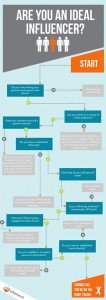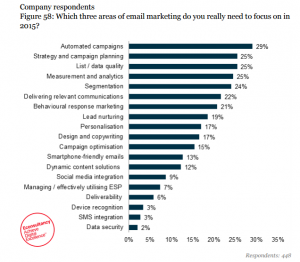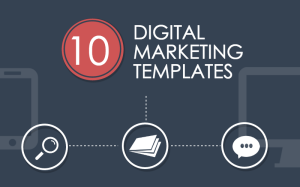When it comes to new employees, hiring is only the beginning of a much larger process.
If you want to set your new team members up for success, you need to create an effective employee onboarding process that makes the transition into a new role happen smoothly, efficiently, and without any major obstacles.
Why does it matter? Because research shows that 20% of employee turnover happens in the first 45 days, and new employees who attended a well-structured onboarding orientation program were 69% more likely to remain at a company up to three years
That means that if you don’t have an onboarding process, you could be wasting your organization’s precious time and money.
Not sure where to begin with an employee onboarding program? You’re in luck. We’ve put together this post to outline everything you need to accomplish to bring an effective process to life.
Before They’re Hired
There’s a common misconception that onboarding begins when an employee actually starts working within a new role, but in reality, there are six steps to the employee onboarding process that should take place before your new hire’s first day.
1. Contact new hire and share important information
The first step in the pre-hiring onboarding process is to get in touch with your new hire to share all of the important information he or she needs to get started on the right foot. This means covering all the bases, like confirming the start date, sharing scheduling details, reminding them what time they need to arrive, providing the address and location of their new workplace (with directions, if needed), instructions for parking, dress code details, etc. All of this information helps your new hires feel prepared and confident for their first day on the job.
2. Identify Technology Needs
Next, you’ll want to identify any of the new hire’s computer needs and requirements. For example: If you’re hiring a new marketing manager, you’ll want to have a conversation about any software he or she will need and the type of computer the new hire is most comfortable with. For you, that means figuring out if you currently have the proper resources available. Pre-order any needed computer/technology so it can be ready to use when the new hire begins (and you don’t waste any time waiting for it to arrive.)
3. Prepare the Workspace
This is also a good time to prepare the new hire’s workspace by supplying the necessary work supplies, any required training materials, and the correct office equipment that he or she may need (like a desk, desk chair, or shelving unit.) Then provide the necessary logins for the computer, get new programs installed, and add them to any relevant company-wide email lists. Having an established workspace ready lets new hires know you’ve been planning for their arrival and helps them feel like a part of the team.
4. Match with a Mentor
It’s a good idea to pair any new hire with an in-house “onboarding buddy” because data from LinkedIn indicates that as many as 56% of new hires want some sort of a buddy or mentor when getting started. This person will be your new hire’s go-to source for questions and can help him or her comfortably navigate a new environment.

Encourage this mentor to regularly check in on his or her new mentee and to share some tips/insights that will make getting acclimated a little bit easier. Make sure there is information provided on who the new hire’s mentor is, what this person does within the organization, and the best way for him or her to get in touch with that person. If you’ve arranged a block of time for the two to get acquainted, share those scheduling details.
5. Notify the Team
Give the team the new hire will be working with a heads up about the person joining their ranks. Email the department/team/functional area with a brief introduction to the new hire, and include his/her start date and details about the role so they can all begin to get familiar with their newest addition. Copy the new employee on the message if you feel it’s appropriate.
6. Assemble the Welcome Packet
Last, but not least, you’ll want to put together a welcome packet. Within this packet, include a job description, welcome letter, contact names and phone lists, mission and values of the company, any company-branded collateral you’d like them to have, and other important company-wide information you want the new hire to get familiar with (like an internal newsletter or a company handbook.)
You’ll also need to include any paperwork that needs signed and filed. Keeping all of the necessary paperwork in order can be overwhelming, so consider HR software options such as:
To make sure you don’t miss a thing, download and print this quick reference onboarding checklist.
During Their First Week
The first week for a new hire can be daunting, but a great onboarding program can take the edge off. Treat the process as a celebration rather than an administrative task by making the experience welcoming and engaging for the new employee.
Make the First Week Fun
Not sure what that looks like? Take a look at companies like Google that have a lot of fun with new employees. For new Google employees’ first all-team meeting, new hires are required to wear quirky “Noogler” hats, marking their formal induction to the company. Google’s “Noogler” onboarding process varies for different roles, but pivots on relationship-building.

Don’t Overwhelm
Try not to overwhelm new employees by spacing out your onboarding program over the course of the first full workweek (not just a single day.) Throughout the first week, new hires should not only be focused on immersing themselves within the company, but with understanding the reasoning behind processes, too. Make sure they have time to tour the building, to take meetings with key team members, and get to spend time observing rather than being launched straight into the new role.
Assign a Task
People want to feel they’re contributing right out of the starting block, so create opportunities for them to achieve small accomplishments during that period. Why? Because research proves that organizations with a standard onboarding process experience 50% greater new hire productivity. That might mean asking them to share some new ideas at a team meeting or having them complete a small assignment. Remember to build these moments into the onboarding experience to foster a feeling of value for the new right away.
Make Time for Relationship-Building
The first week is also a pivotal time for relationship-building, so encourage the new hire and his or her onboarding buddy/mentor to meet several times throughout the week. The new hire should also have time to meet with various parts of the company to see how departments work together and meet with each department head for a one-on-one meeting. If possible, schedule a group lunch that gives the new hire to chat with new co-workers in a non-work context.
At the end of the first week, meet with the new employee and discuss the individual’s first impressions, and give them a chance to ask any remaining questions.
After The First Week
Just because the new hire has made it past the first week mark in the new role doesn’t mean the onboarding process should come to an abrupt halt. Don’t be like 37% of companies who fail to extend onboarding past the first month. In the coming weeks, answer remaining questions and follow up to gauge how the employee is doing both with the role and with the new team.
Conduct a Survey
You should also make time to survey new employees on what you can do to make the onboarding process better. With this survey, you can spot holes in the onboarding process and get a more realistic view of your onboarding strategy from the new hire’s perspective.
Ask questions such as:
- What worked well?
- What could be improved?
- What did you feel like you were missing (but needed to know?)
- Did you feel you had enough time to get acclimated to the new role?
- Did you get introduced to the people you work with closely?
- Was all of your office and equipment provided and ready on your first day?
The Society for Human Resource Management has a great template you can follow for this, too. Asking these questions will help shape your onboarding program moving forward so that it is constantly improving.
Schedule Training
Training new employees is something that often falls between the cracks in the onboarding process, so after the initial orientation process has wrapped, make time to schedule on-going training. Research shows that 25% of companies admitted that their onboarding program does not include any form of training, which leads to a loss of 60% of a company’s entire workforce. Ask your new hire which new skills he/she feels she needs trained on to effectively execute the role, and make it possible for the new hire to attend relevant conferences, webinars, etc. This pays off in the long run: Employees who receive training are happier, and 30 percent are more excited about their work.
Provide a Getting Started Project
60% of companies indicated that they do not set any milestones or concrete goals for new hires to attain, which means new hires often struggle to feel they are making an impact at work. Allow your employees to reach their full potential by providing opportunities to accelerate once they understand the business and their tasks in the company. Note: It typically takes about eight months for an employee to reach full productivity within a new role, so start small and let the new hire work up to more robust tasks.
Recognize and Reward
Once your employee starts to showcase their value, you and your team should celebrate that progress. Studies show that engaged employees have 51% lower turnover and 18% higher productivity, so it’s clear that taking the time to reward and recognize a job well done can help reduce employee churn. Whether it’s just taking a moment to note an employee’s success in a team meeting, or an award program you’ve established to celebrate a high-performing team member, these activities help your team strive to be the best.
Keep Employees Engaged
If you want to keep employees engaged at work, you need to follow some of the best practices to build loyalty. After finding a talented candidate and investing so much time into an improved onboarding process, the last thing you want is to constantly struggle with employee turnover.
This is a bigger issue than you might think, according to data from a Gallup poll:
“The bulk of employees worldwide — 63% — are “not engaged,” meaning they lack motivation and are less likely to invest discretionary effort in organizational goals or outcomes. And 24% are “actively disengaged,” indicating they are unhappy and unproductive at work and liable to spread negativity to coworkers. In rough numbers, this translates into 900 million not engaged and 340 million actively disengaged workers around the globe.”
Boost engagement by putting an emphasis on:
- Professional development
- Company events and outings
- Employee-to-employee recognition
- Small gifts for major life events
All of these help your team members feel like they’re part of a family at work–not just showing up and putting in the required time.
Showcase Their Value
During performance reviews, remind the employees how their work allows the company to grow. Talk about the finite results they’ve directly helped produce, and showcase the value their individual work brings to the organization. Rather than conducting a standard issue, “You’re doing great, keep it up,” talk about what specifically you admire about their day-to-day work.
Jessica Greenwalt, Founder of Pixelkeet, recommended in showcasing value by giving credit when it’s due:
“We give employees and contractors ownership over the projects they are working on and give credit where credit is due. Contractors are added to our website while they are working on projects with us, so they know that they are part of the team. Team members’ names are associated with the final projects produced, so they know that when they work on a project, they are not only representing the company, but themselves as well. As a result, our team members are very engaged and heavily invested in the success of their projects. They are extremely motivated to work well with clients, and with each other, to produce quality work.”
Give Room to Grow
Over time, you’ll want to give your employees room to grow via more responsibilities (but not more tasks.) Allow them to tackle new challenges and expand their duties into more advanced positions within the organization (and remember to compensate them for that, too.) If you need some direction in this department, here’s a complete guide to employee development.
Incentivize Goals
Give your hires a reason to excel by incentivizing the goals you’ve set for them. Bonuses, awards, and title changes give your team members a good reason to work hard and strive to reach new heights at work. The shape of your incentive program will vary based on your unique business, but motivating your team can take many different forms, such as:
- Flexible scheduling
- Paid time off
- Financial rewards
- Gift certificate to a place of their choosing
- A prize package
Regardless of the form your incentive program takes, remember to be consistent across the board and always deliver rewards on time.
Provide Team-Building Experiences
Now, we’re not just talking about trust falls here, but rather real, fun, games that help them better understand the people they work with. Over time, these team-building exercises will create a more cohesive team that is consistently complementing each person’s different strengths and weaknesses. Even something like a team-wide or company-wide dinner or lunch gathering can be a great time for team members to bond outside of a workday context.
Actionable Takeaways
Now that you have a better idea of how to launch an extremely successful onboarding program, it’s time for you to take a few steps that will help you get your own program up and running.
- Prepare your pre-hiring onboarding strategy and materials. Document your process for how you’ll prep incoming hires and assemble a few standard welcome packets so you have them ready to hand out.
- Choose an HR software that makes required documentation more manageable. Note: If you choose a cloud-based solution, you’ll never have to worry about misplacing hard copy documents again!
- Gather your team to talk about what they think a new hire needs during the first week in a new role, and brainstorm some ways to make the onboarding process a little more fun.
- Create a standard onboarding survey that is ready to distribute.
- Come up with an engagement/incentive program for all employees–not just new ones–to drive up employee engagement at work.
If you can get these basic building blocks to a stellar onboarding program in place, the other elements will be that much easier. Just remember: The onboarding process is not a one-day catch-all, it’s a long-term strategy at developing a team of people who love what they do.
Business & Finance Articles on Business 2 Community(132)
Report Post





